Home Particles in General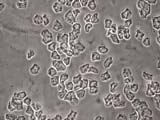 These are Human Skin Flakes with Phase Contrast Illumination. Notice the
tendency to be roughly polygonal. When viewed with polarized light the
cells can show
stress birefringence.
These are Human Skin Flakes with Phase Contrast Illumination. Notice the
tendency to be roughly polygonal. When viewed with polarized light the
cells can show
stress birefringence.
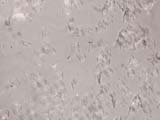
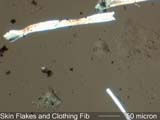
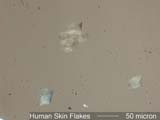 Click here for more photos in this category Clothing fiber, as used here, refers to any textile fiber regardless of use. Environments both inside and out contain large numbers of these fibers. Most of these fibers are derived from clothing but carpets and other cloth surfaces also contribute to the environment.  This is an image from an environmental tapelift collected in a home. There are a
number of different types of fibers in this image. The fiber
running diagonally in the upper left corner is wool. The fiber bent in
a "V" on its side in the lower center of the image is a linen
fiber.
The reddish fiber snaking through the image is a rayon fiber dyed red.
The blue fiber running from the upper center to the center right is a mercerized cotton
cotton fiber dyed blue.
<
This is an image from an environmental tapelift collected in a home. There are a
number of different types of fibers in this image. The fiber
running diagonally in the upper left corner is wool. The fiber bent in
a "V" on its side in the lower center of the image is a linen
fiber.
The reddish fiber snaking through the image is a rayon fiber dyed red.
The blue fiber running from the upper center to the center right is a mercerized cotton
cotton fiber dyed blue.
<
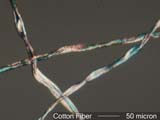
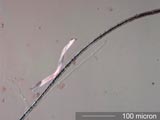
Click here for more photos in this category 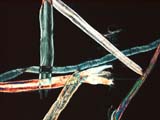 These are paper fibers viewed with circular polarized light.
These are paper fibers viewed with circular polarized light.
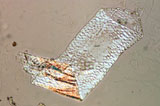
Click here for more photos in this category Bird Debris 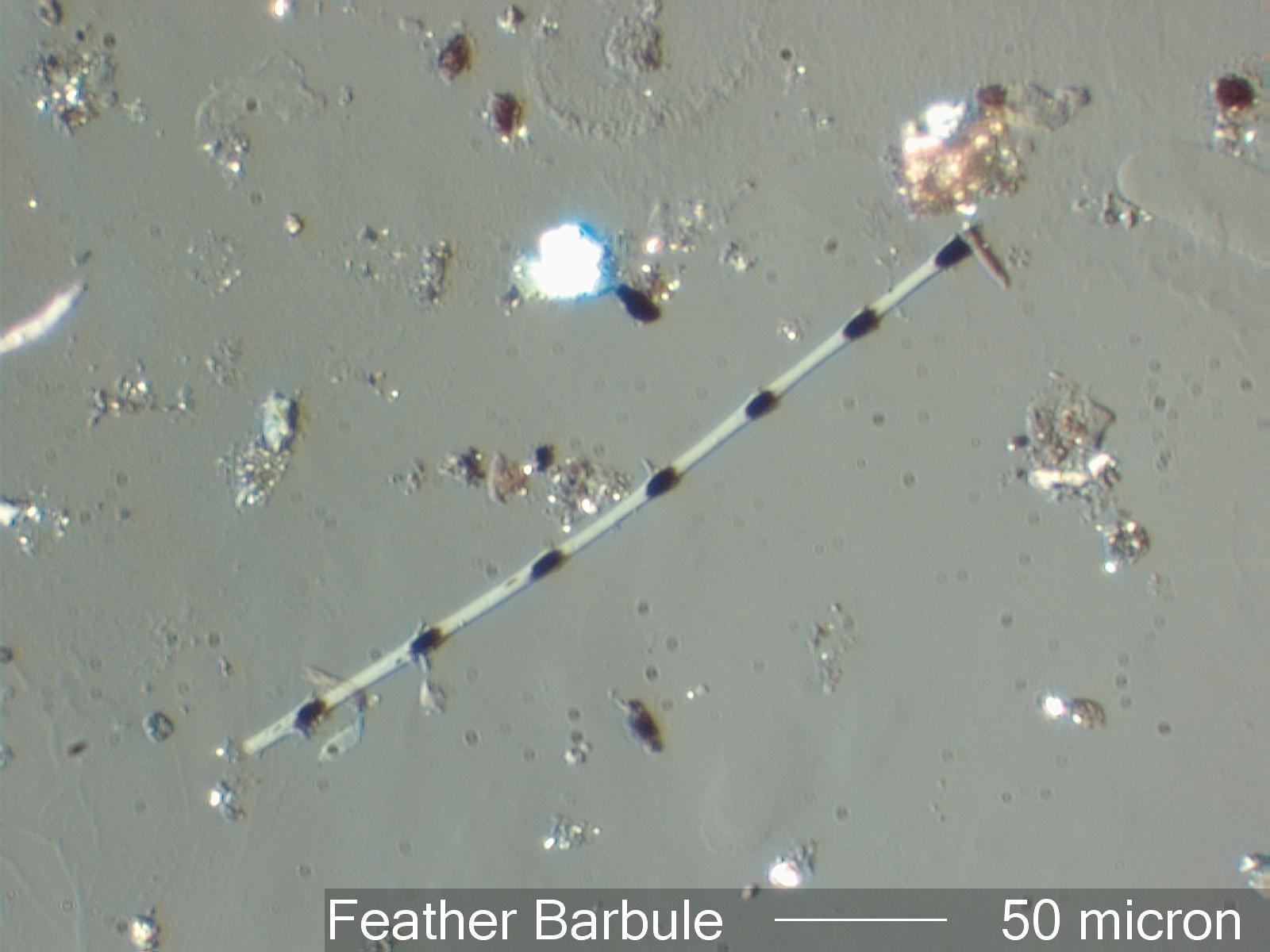 Click here for more photos in this category Cat Debris 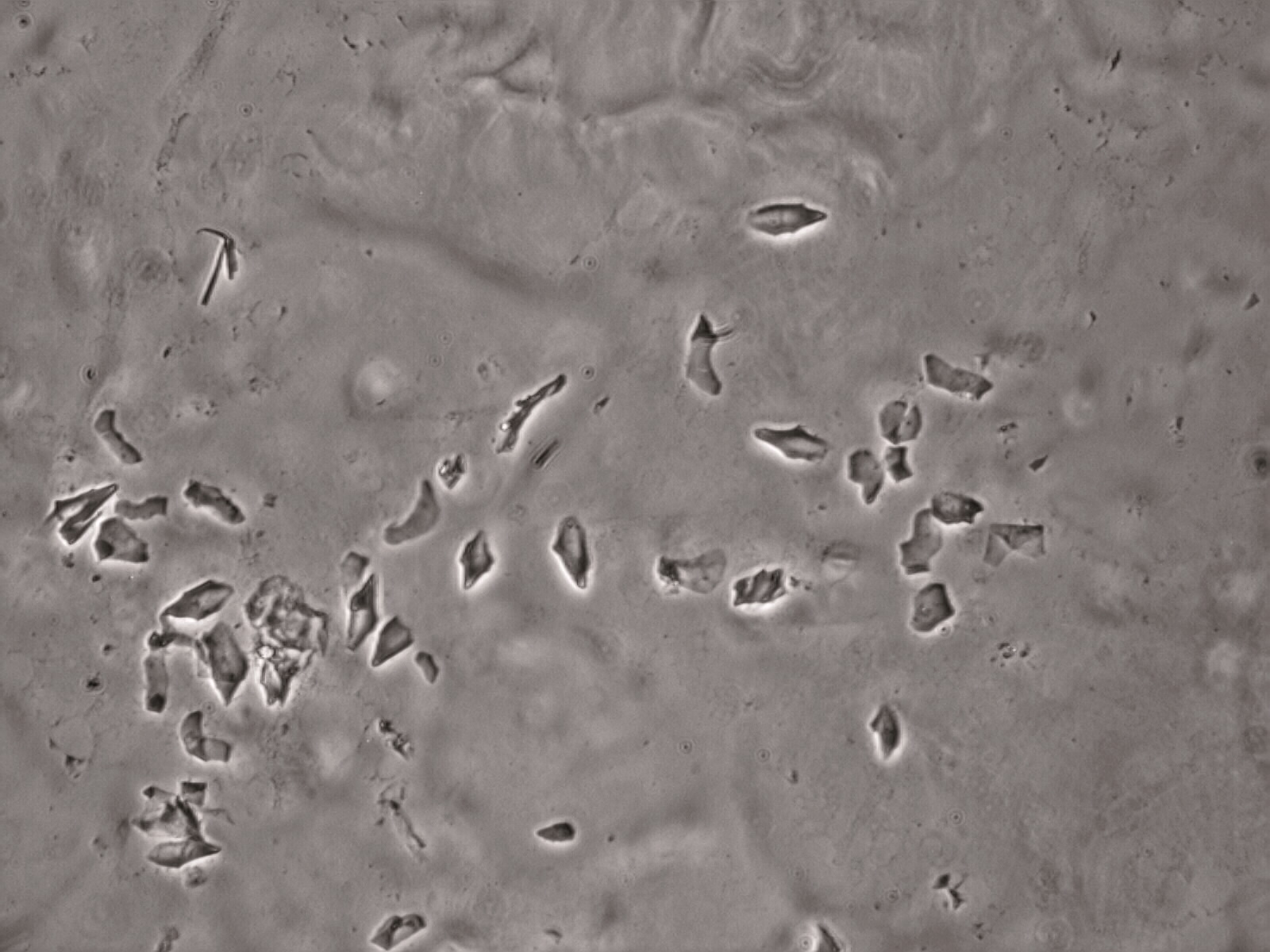
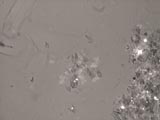
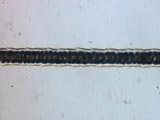
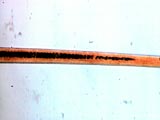
Dog Debris 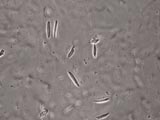
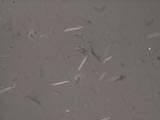


Guinea Pig Debris 


Click here for more Guinea Pig Debris photos Mouse and Rat Debris 



Click here for more Rat and Mouse Debris photos Rabbit Debris Click here for more Rabbit Debris photos 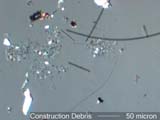
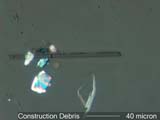
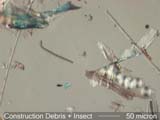
 Click here for more Construction Debris photos 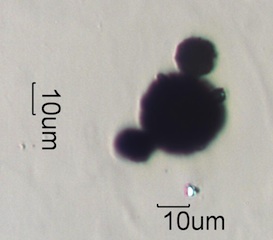
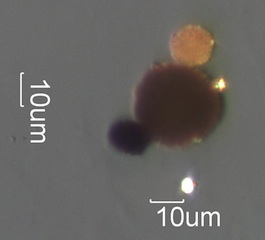
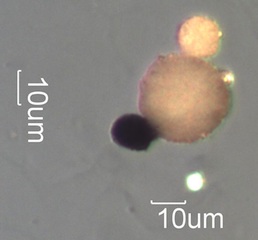
Click here for more Paint Spheres 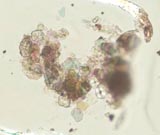 Click here for more photos in this category 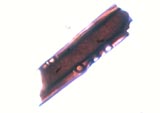
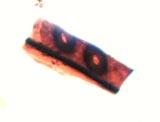
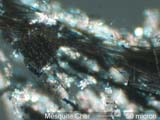
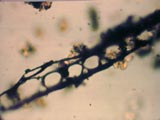 Click here for more photos in this category Natural gas fired fireplaces introduce relatively small amount of soot and other particles into the home but they do contribute some. Heat modified glass fibers, the mock ember bed, may also be introduce into the living space. 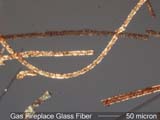
The dark shading that forms behind picture frames on walls, at the baseboard, on walls at the ceiling, above incandescent lights near the ceiling, and other locations are due to the diffusional deposition of very small particles, typically dominated by combustion particles such as soot. 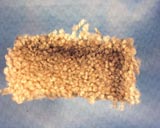
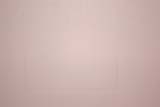
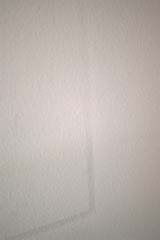
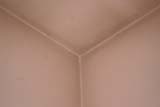
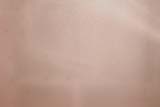
Humans generate as much as 5 million skin flakes per minute in the home. Humus is a broad category that includes degraded biological materials that come in on shoes, on pets, or from animals in the environment. 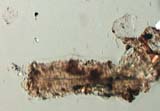
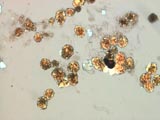
There are over 120 different types of mites that live in homes. Most of them can cause health effects in sensitive people. Typical allergen testing is sensitive to only two types of mite and these two are often not the most common in a home. Mite allergens are in the frass (feces) as well as the body parts of the mite. 
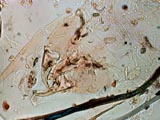
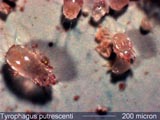
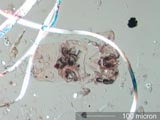
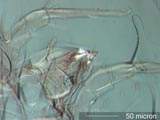

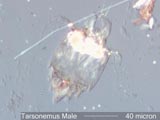
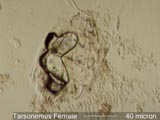 Click here for more photos in this category Starch is a very common particle in all environments but can be very high in homes. Starch is used in cosmetics, body powders, as a powder on elastomers and plastics to prevent sticking, in some carpet fresheners, food, etc. Bathrooms, bedrooms, and the kitchen tend to be the rooms with the most starch. The last set of three photographs show the same field of view with different analytical lighting. 


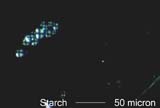 Click here for more photos in this category Cigarette ash has a very high crystalline ash content due to the potassium nitrate and other additives to the tobacco. Cigar ash and other plant ashes have much less optically active ash. There is generally some charred plant residue that can be used to identify leaf or other plant parts. 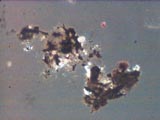
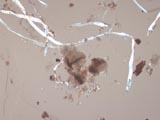
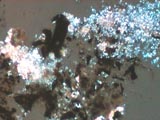
These particle are an indication of the intrusion of exterior air or track-in debris into the interior space. Click here for more photos of Tire WearClick here for more photos of Natural Minerals Click here for more photos of Cenospheres Click here for more photos of Charred Wood Click here for more photos of Insect Parts Click here for more photos of Plant Parts Click here for more photos of Pollens Click here for more photos of Fern Parts and Spores Click here for more photos of Fungal Debris and Spores Click here for more photos of Flyash These particles are the result of exposure to smoke from fires inside or out side the home. Click here for more photos of Fire Related Particles |

